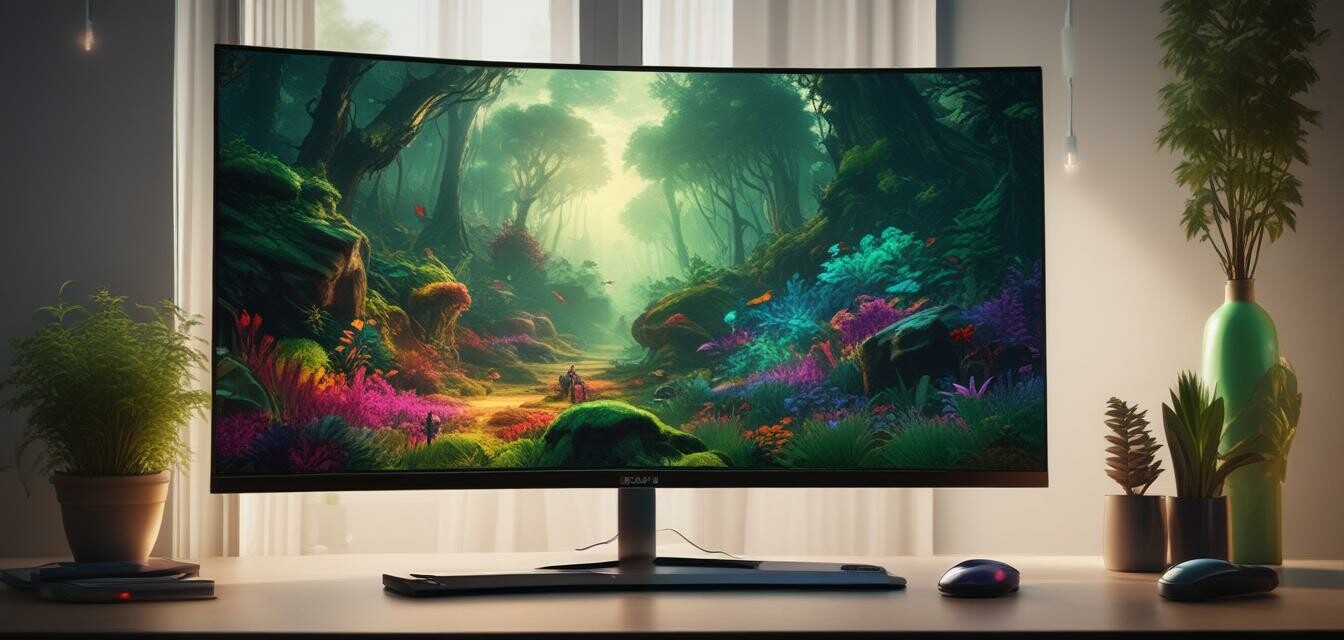
Gaming Monitor Sustainability: The Role of OLED Technology
Key Takeaways
- OLED technology is known for its superior energy efficiency compared to traditional LCD monitors.
- Improved durability and potential for recycling make OLED gaming monitors a sustainable option.
- The gaming industry is moving towards environmentally friendly practices in 2025 and beyond.
- Exploring the lifecycle of OLED technology reveals opportunities for reducing e-waste.
- Future innovations in OLED could further enhance sustainability in gaming monitors.
The gaming industry is continuously evolving, and with this evolution comes a growing interest in sustainability. As we face increasing environmental challenges, gaming monitor manufacturers are looking for ways to minimize their environmental impact. One of the most promising technologies leading this charge is OLED (Organic Light Emitting Diode). In this article, we'll explore how OLED technology enhances sustainability in gaming monitors, focusing on energy efficiency and recycling opportunities anticipated in 2025.
Understanding OLED Technology
OLED technology is distinct from traditional LCD screens. With OLED, each pixel emits its own light, eliminating the need for a backlight. This unique feature contributes not only to vibrant images but also to energy efficiency. Let's compare OLED technology with traditional LCD screens in terms of key sustainability factors:
| Feature | OLED Technology | LCD Technology |
|---|---|---|
| Energy Efficiency | Higher; consumes less power, especially when displaying darker images | Lower; backlighting consumes more energy |
| Longevity | Long lifespan with proper use, potential for less degradation | Can suffer from issues such as color fading over time |
| Recyclability | Materials can be reclaimed, with ongoing developments in recycling technology | More challenging due to mixed materials used |
| Environmental Impact | Lower carbon footprint during operation | Higher energy consumption leads to greater environmental impact |
Energy Efficiency of OLED Monitors
One of the most significant advantages of OLED gaming monitors is their energy efficiency. In contrast to traditional monitors, OLED displays draw less power when showing darker images, which is common in many modern games. For gamers who spend hours in front of their monitors, this two-fold benefit minimizes electricity costs and reduces their carbon footprint.
Energy consumption in gaming
According to studies, gaming can significantly affect household energy consumption. As many look to mitigate their impact on the environment, switching to energy-efficient gaming monitors like OLED can play a crucial role. Here's a breakdown of the average energy consumption of different monitor types:
| Monitor Type | Average Power Consumption (Watts) |
|---|---|
| OLED Monitor | 80-120 |
| LCD Monitor | 100-150 |
| LED Monitor | 60-130 |
As you can see, OLED monitors not only provide stunning visuals but also offer substantial energy savings. Therefore, choosing an OLED gaming monitor means actively contributing to energy conservation efforts.
Recycling Opportunities in 2025
Environmental sustainability does not end with the energy efficiency of devices. The end-of-life disposal of electronics is a significant concern, often leading to e-waste. Fortunately, OLED technology is paving the way for improved recycling processes.
The lifecycle of OLED technology
The lifecycle of OLED gaming monitors includes the following stages:
- Production: Environmentally responsible manufacturing practices are being adopted.
- Usage: Energy-efficient operation during the product's life cycle.
- Recycling: Innovations in recycling technology will allow for the recovery of valuable materials.
Future of recycling in gaming monitors
By 2025, we expect to see substantial improvements in how manufacturers handle the recycling of OLED monitors. Trends indicate:
- Increased availability of take-back programs for old monitors.
- Developments in recycling technologies able to convert components back into usable materials.
- Greater awareness and responsibility from consumers regarding recycling
Innovations on the Horizon
The future of OLED gaming monitors looks bright, with ongoing advancements aimed at enhancing their sustainability. Manufacturers are investing in research to improve energy efficiency further and the lifespan of OLED technology. With innovations like flexible OLED displays, we are sure to see a shift in how gamers experience visuals. Here are some key technologies to watch for:
- Eco-friendly materials: Research into using more sustainable materials in manufacturing.
- Smart power management: Technology that automatically adjusts a monitor’s power usage based on content.
- Hybrid displays: Combining OLED with other technologies to improve performance and sustainability.
Conclusion
The integration of OLED technology in gaming monitors marks a significant leap forward in sustainability. With ongoing advancements in energy efficiency and promising recycling initiatives expected by 2025, gamers now have the option to contribute to a more sustainable future while enjoying top-notch visuals. As we move, keeping an eye on innovations and trends will be essential, ensuring that we make informed choices in the gaming world.
Pros
- Improved energy efficiency
- Longer lifespan and reduced degradation
- Potential for recyclability
- Lower carbon footprint during operation
Cons
- Higher initial cost compared to alternatives
- Perceived risk of burn-in issues
For more insights into the evolving world of gaming monitors, check out our [Buying Guides](https://www.oledgamingmonitors.com/blog/buying-guides) or explore the latest in [News and Trends](https://www.oledgamingmonitors.com/blog/news-and-trends) regarding gaming technology.